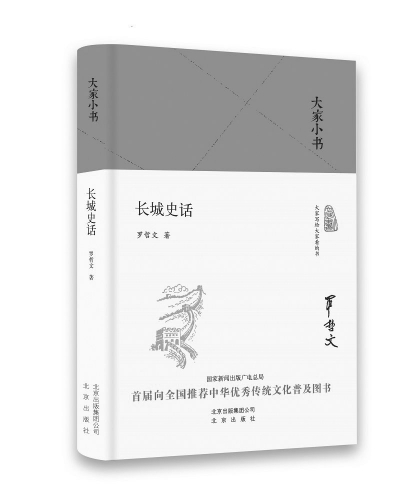The poetry of the Great Wall

History of the Great Wall
Author: Luo Zhewen
Publisher: Beijing Press
Luo Zhewen (1924-2012) was a well-known scholar of ancient Chinese architecture. During his lifetime, he dedicated himself to studying the Great Wall. His History of the Great Wall was recently published as part of the series “Small Books by Great Scholars.”
In this small book, Luo gave his opinions of public stereotypes of the Great Wall. First of all, for Luo, the Great Wall is more than just a famous tourist site like the Shanhai Pass or Badaling, or just the sites constructed or maintained in the Ming Dynasty. He suggested that the Great Wall is a concept covering all the remains of the Great Wall from the pre-Qin period to the Ming and Qing dynasties in the northern and southern areas of China. The public does not realize that some historical relics around them are, in fact, part of the Great Wall.
It is generally believed that the Great Wall served as fortresses against nomadic tribes. However, Luo suggested that in addition to its military function, it also had civil functions. Battles do not happen every day. Luo suggested that ever since the period of the Emperor Qin Shihuang, the Great Wall had been used to protect grain fields grown by garrison troops as well as for communication and travelling merchants. The concept of a “national boundary” did not exist in ancient times. Without the Great Wall, it would be difficult to manage the cross-border movement of the population, collecting tariffs, cracking down on smuggling and protecting the economic order both outside and inside the Great Wall. In terms of business and management, the Great Wall was an advanced way to manage affairs related to national borders.
As an architect, Luo suggested the Great Wall shows high-level architecture technology as well as advanced organizational management. He said that these technologies could be seen in the making of the construction materials, the transportation of the materials and equipment being moved over mountains, and the way the walls were constructed following the contours of the mountains. In regard to the advanced organizational management, an unearthed stone tablet from the Ming Dynasty described the positions of administrative bureaucrats and technicians who were responsible for the construction of the Great Wall.
The Great Wall is more than tangible walls. More importantly, it serves as an image, a metaphor and a poetic existence. It was a common metaphor for the political situation in the Qin Dynasty. In the Century of Humiliation (1840-1949), the Great Wall, on the one hand, was an image of a conservative, backward and self-secluded China. On the other hand, the grand Great Wall that stood firmly became a metaphor of the Chinese people whose wills were united in defending the nation against foreign invasion, like an invincible fortress that could never be conquered. It remains as a metaphor of a strong shield guarding against all threats in contemporary China.
(edited by CHEN ALONG)
